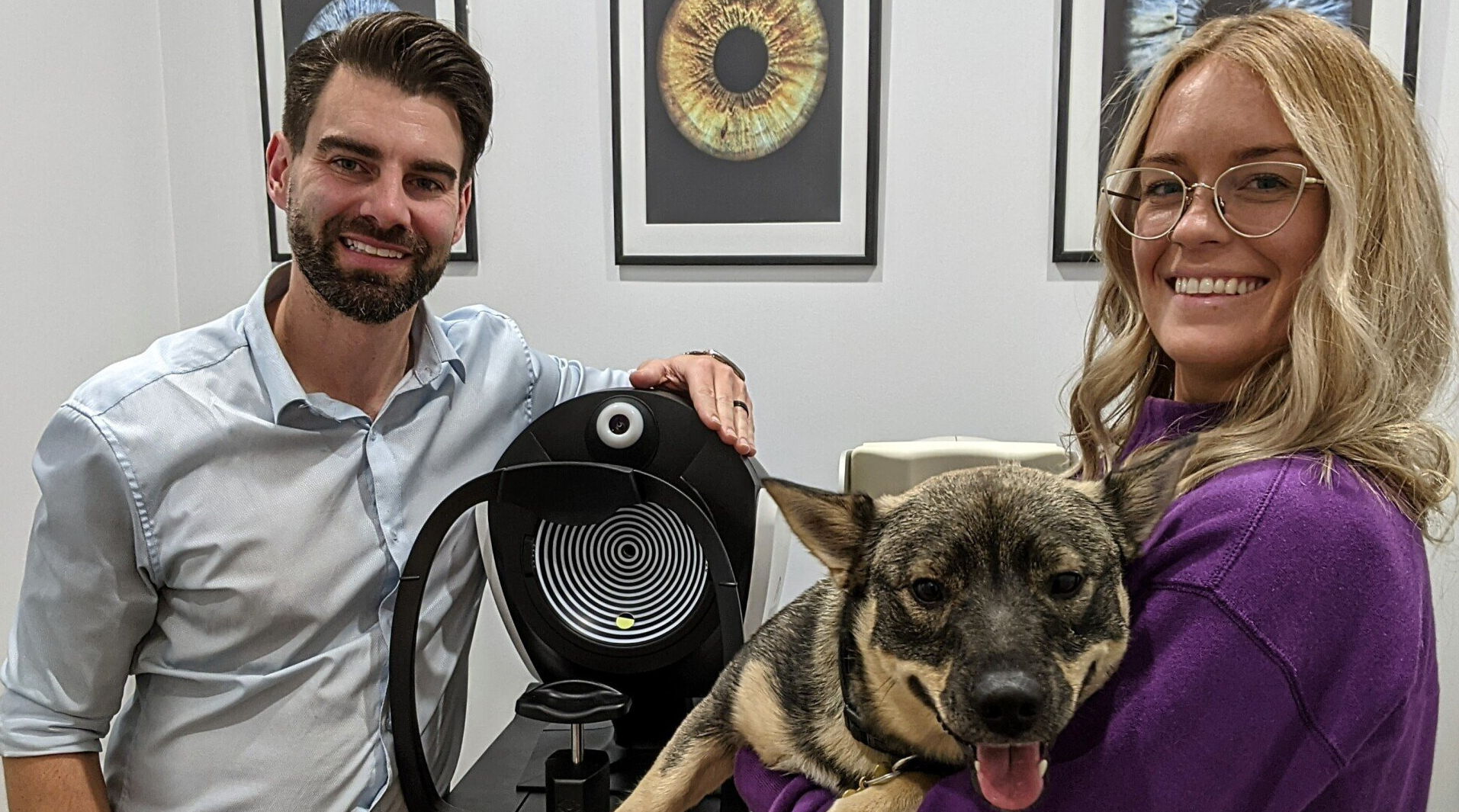Say Hello to the DNEye scanner (and sharper vision)!
Your world is about to get a whole lot clearer.
“Wow” was all I could say when I put on my glasses equipped with the newest Rodenstock lenses. I couldn’t quite put my finger on what was different, but the world was crisper and clearer than I had ever seen it before, as if my vision was now high definition. I was sold.
Prior to this moment, I was already thoroughly impressed by the lenses that this German company was producing – after all, that’s one reason why we chose them to be our main supplier! However, these lenses were different: they were made based on my individual eye anatomy using information from the Rodenstock DNEye scanner.
I wouldn’t blame you if you had never heard of this machine before, but allow me to elaborate. The DNEye scanner is a machine that measures the anatomy of the eye and gathers data that has previously been unmeasurable. This data, collected from 7000 points across the eye, is then integrated into highly customizable, individual lenses for your glasses.
The ultimate goal of the DNEye is to minimize blur and distortions that are found in traditional lenses. While some people may become accustomed to these flaws, they can be common hurdles for those who wear glasses regularly. When corrected for, it reveals the sharpest contrast vision, the best night vision, the largest field of vision, and the most comfortable vision that can be found in a lens.
Sounds pretty fancy, and trust me, it is! Somehow, Rodenstock managed to put even more icing on the cake. This is really a pivotal moment in optics as this level of intricacy hasn’t existed in lenses, it really is tailor-made for your eyes.
It may seem like Rodenstock is promising a lot with this new device, and that’s why I had to try it for myself. Once I was impressed, we welcomed it with open arms into the practice and wanted our customers to experience that same revelation that I did.
Since having the DNEye in Monocle Optometry we’ve had nothing but very happy customers! We find that people are coming far and wide to try out these lenses that seem to promise the clearest vision possible. Some people are content with their vision in their current glasses while others still struggle to find clarity. However, the lenses made with the DNEye all yield the same outcome: the “wow” moment.
It’s easy to become complacent with certain things, and our vision is no exception. Quite often we don’t realize what we’re missing until we have something to compare to. Thankfully, that something is now the DNEye derived lenses.
We now offer the DNEye scan with every eye test. We don’t want people to just be content with their vision, we want them to be blown away by what they’ve been missing!
.




